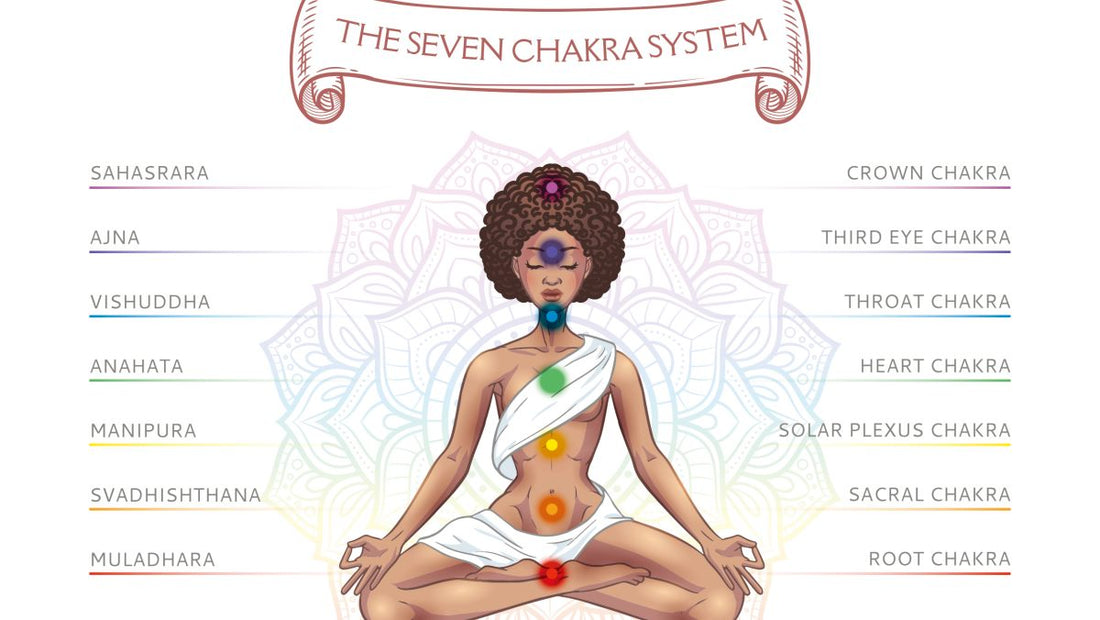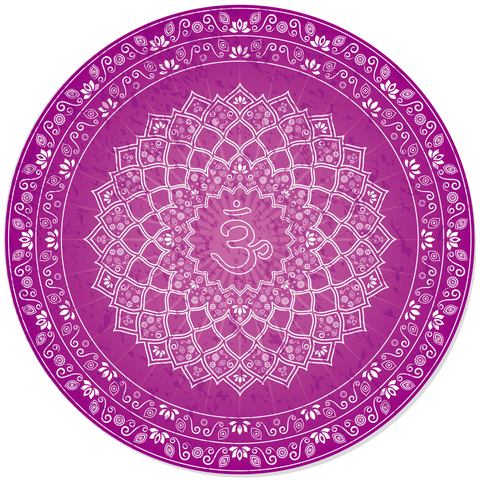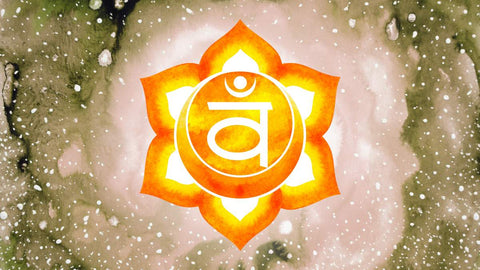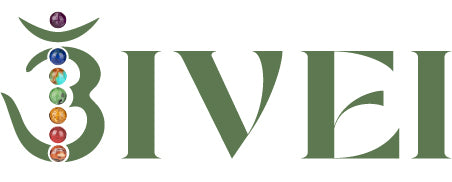
What Are Seven Chakras and Their Symbolic Meanings?
Share
If you are a yoga and meditation enthusiast then you must have heard of the 7 chakras. Meditation is the seventh stage of the eight branches of yoga, which is the level reached after completing: precepts, internal practices, asanas, pranayama, intake, and concentration, so you need to start the chakras before you can meditate. The seven chakras of yoga are the most extensive body chakra system in the world today. Our chakras influence our thinking cognition. When our cognition improves, the chakras get energized. If our seven chakras are clear, the third eye can be opened, the energy can unblock the brain chakras and the brain gets a lot of energy. If you are a beginner, and want to know more about seven chakras
What are seven chakras?
Chakras are energy centers spread throughout the body. The earliest written record of chakras comes from the Vedas, an ancient Indian text describing the philosophy of yoga, written between 1,500 and 500 BC. There are seven main chakras in our body and many smaller ones. The seven chakras connect the different glands and organs in the body and regulate the flow of energy throughout the body. These energy centers are clusters of nerves that come together and can be activated and recharged through regular meditation. Each chakra has an associated color, and mantra (a word, syllable, or sound repeated to help focus attention during meditation).
Cosmic energy - known as kundalini is dormant, and it sits like a coiled snake at the base of the spine, on the root chakra. Meditation is designed to penetrate the kundalini energy through all the chakras and raise it to the crown chakra. When Kundalini energy penetrates a particular chakra, one feels, hears and sees (with eyes closed) the qualities of that particular chakra. Through practice, an individual can elevate the Kundalini energy and recharge all the chakras to bring harmony, smoothness, health and happiness in life.
Chakras can become blocked due to stress, emotional imbalances or physical problems. When the free flow of energy is blocked, physical ailments and emotional imbalances can arise. Here are the 7 chakras in our body:
Sahastrara Chakra - Crown Chakra
Ajna Chakra - Third Eye Chakra
Vishuddha Chakra - Throat Chakra
Anahata Chakra - Heart Chakra
Manipura Chakra - Solar Plexus Chakra
Svadhisthana Chakra - Sacral Chakra
Muladhara Chakra - Root Chakra
What's the meaning of the seven chakras?
1. Sahastrara Chakra - Crown Chakra
Crown Chakra is located directly above the center of the head (Baihui point), is purple in color and governs the upper part of the brain, the optic thalamus nerve and the pineal gland; this chakra is about our spirituality, connection with nature, cosmic connection, enlightenment, cosmic consciousness, celestial unity and so on.

Human beings on earth must rely on the root chakra to absorb the earth's energy to nourish the physical body, and they must also rely on the crown chakra to absorb the light of the cosmic stars to nourish the spiritual body and the entire chakra system. People enter and exit through the seventh chakra at the beginning or at the end of their lives.
When the crown chakra energy is balanced:
Unity of body and soul, a strong sense of being; good at self-reflection; following the path.
When the crown chakra energy is out of balance:
Physical: insomnia, headaches, migraines, nervousness, poor memory, inability to concentrate, brain diseases caused by lack of oxygen in the brain, nasal congestion, eye pain, ear pain.
Mental: emaciation of body and mind, mood is not cheerful, go with the flow, depression, no goals.
Skin: yellowish complexion, acne, spots, etc.
2. Ajna Chakra - Third Eye Chakra
The third eye chakra is located between the eyebrows. The Sanskrit word for the brow chakra is "will" or "command". The third eye chakra governs all the chakras.
If one is overly serious or self-centered, the brow chakra is closed; if one is sincere, wise, and free of ego, the third eye chakra opens.
The Third Eye Chakra controls the other chakras, and because of its importance, almost all religions are exploring ways to open it. Once opened, the third eye chakra can lead one to higher realms and inspire different talents. This is why the gods of the East often have a third eye in the center of the eyebrow, symbolizing the opening of the Third Eye Chakra.

There is an old saying that if a person can die in the holy city of Varanasi, he can be directly liberated. In fact, Varanasi is not only the name of the holy city, but also represents the junction of the brow and the nose, where the third eye chakra is located. It symbolizes the ability to abandon the ego because of liberation or enlightenment. Excessive thinking for oneself, taking everything too seriously, and expecting too much will make one too serious and close one's third eye chakra so that one cannot realize the meaning of life as a play.
3. Vishuddha Chakra - Throat Chakra
Throat chakra is located in the pharynx (back of the throat), is azure in color, and governs the throat and thyroid glands of the neck and the ears, nose and mouth of the face. It means "purity" or "purification" in Sanskrit and is concerned with expression and creation. This is the active center of creativity, synthesizing old ideas into new ones. The throat chakra is an avenue of expression, whether it be sound, vibration, music, writing, painting, or any other form of art.

When the Throat chakra energy is balanced: the ability to really listen, to speak eloquently, to express oneself freely with strangers, and to have a sense of humor; when the energy is too high: the ability to become arrogant, self-righteous, to talk too much, and to speak without thinking.
When Throat chakra energy is out of balance: there is fear, timidity, inability to express oneself, mumbling or voice whispering;
4. Anahata Chakra - Heart Chakra
Anahata Chakra is located at the midpoint of both nipples, is green in color and governs empathy, love and compassion. Physically it is responsible for the body's heart, lungs, thymus, and lymph as well as the respiratory and circulatory systems.

When the heart Chakra energy is balanced:
Kindness, full of love, compassion, friendliness, gentleness and softness, strong healing ability, ability to empathize, harmonious relationships.
When the heart Chakra energy is out of balance:
Physical: Heart, lung, and trachea disorders, heart aches; such as dry mouth, tightness in the chest, shortness of breath prone to respiratory inflammation, shoulder and back aches, burning palms.
5. Manipura Chakra - Solar Plexus Chakra
Solar Plexus Chakra is located in your navel area. Manipura means 'place of jewels' and is the seat of self-will, self-knowledge and self-power. The element of fire governs this chakra, and through the power of fire we purify the toxins that build up in the body and the inner being, and distill the high purity of the Self. The heat of fire empowers us and ignites the inner strength that is central to the development of the self and personality. The Solar Plexus Chakra governs the body's metabolism and is responsible for regulating and distributing the metabolized energy to all parts of the body, nourishing the body and lifting the spirit.

When it is healthy, thinking becomes a lifelong process. By integrating information from the aura in a way that does not control the thinking process. When its energy is imbalanced, it is susceptible to the influence of other energy fields leading to phenomena such as emotional disquiet or physical weakness.
6. Svadhisthana chakra - Sacral Chakra
The sacral chakra is located in the lower abdomen, near the reproductive organs. It is the center of our creativity, passions and emotions. It governs our senses, feelings and physical experience and its element is water, which represents fluidity, flow and movement of our emotions. The Sanskrit name Svadhishthana translates as the place of the self.

The fertility chakra is associated with emotions, feelings, sexuality and creativity, and is the center of sensory perception, action, emotion, pleasure, sensuality, intimacy and connection, and is a source of energy for nourishment and exploration of the world. The fertility chakra influences emotions, and emotions contribute to the evolution of consciousness through the body. When we express emotions, we move energy out of the unconscious and through the body into the conscious mind. This flow of consciousness recharges the body and cleanses and heals the body, as well as the unimpeded operation of our life force. By operating in this way, we create change. Actions are linked to emotions, but as we grow up, we learn to "get it", and "getting it" means that we start to do actions that are not in line with our emotions, and our emotions become complexes. Repression takes energy, and too much repression leads to apathy.
When the sacral energy is out of balance: the body becomes rigid, lacks emotion or is often expressionless, feels lifeless and unsexy; normal: expressive, emotionally controlled, feels passionate and energized; high energy: overly emotional, overly dependent on others.
7. Muladhara Chakra - Root Chakra
The root chakra is located in the base of the spine, perineum. The root chakra is the root of life and provides the energy for survival, it transports nutrients, life force and energy flow throughout the system. It is the cornerstone that holds up all the other chakras, and therefore the bottom chakra has a key position. The submarine chakra links the earth element and all things solid and mundane. Examples include our bodies, our health, our survival, the material things and money we have, and our ability to focus and fulfill our personal needs.

When the energy is out of balance: one will be insecure, feel watched over at all times, be constantly anxious, and easily feel unwelcome;
When energy is balanced: enjoys the moment, is down-to-earth and stable; When energy is too high: may have strong materialistic desires and greed, may be too much in search of stability and refuse to change.
